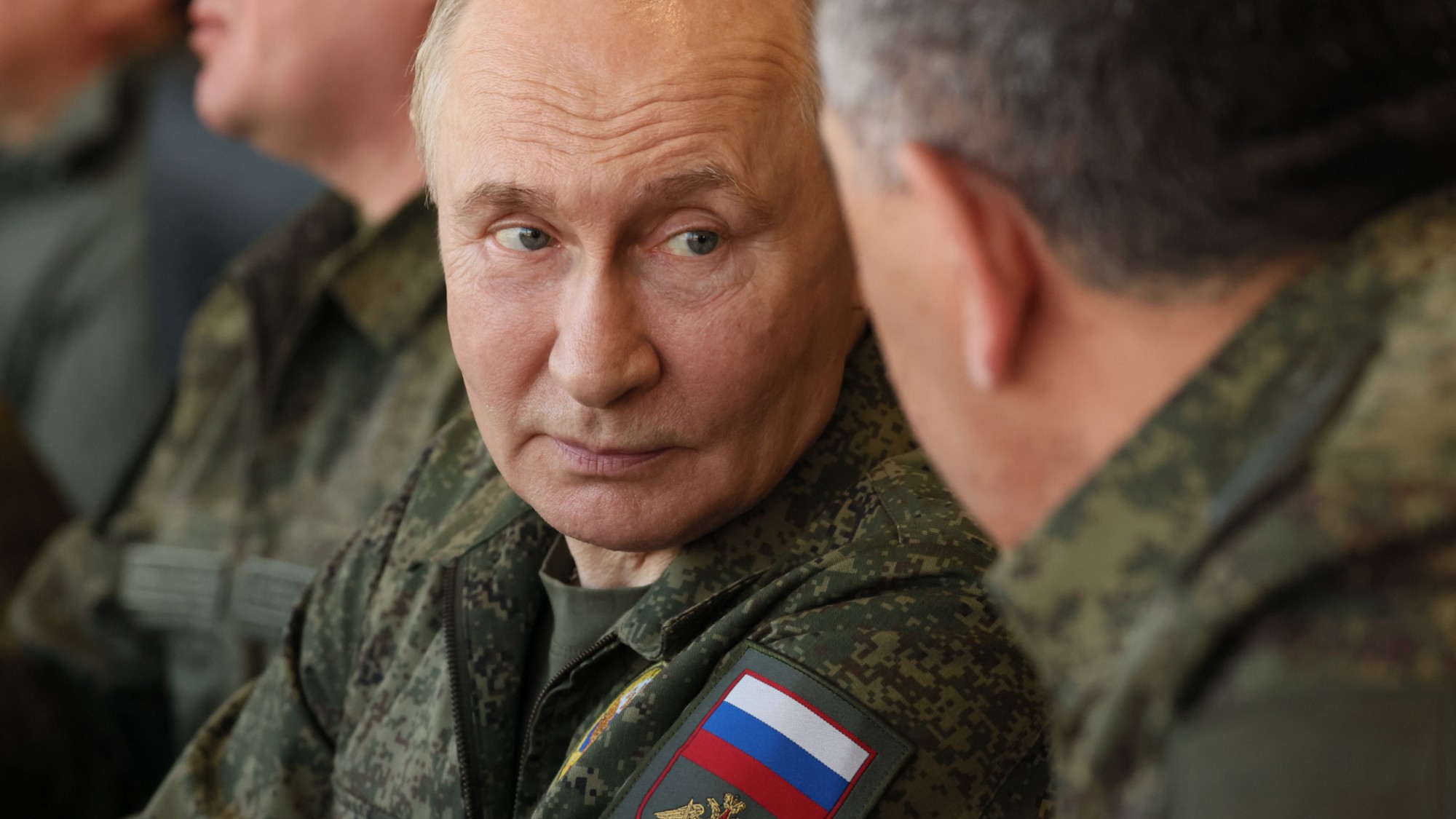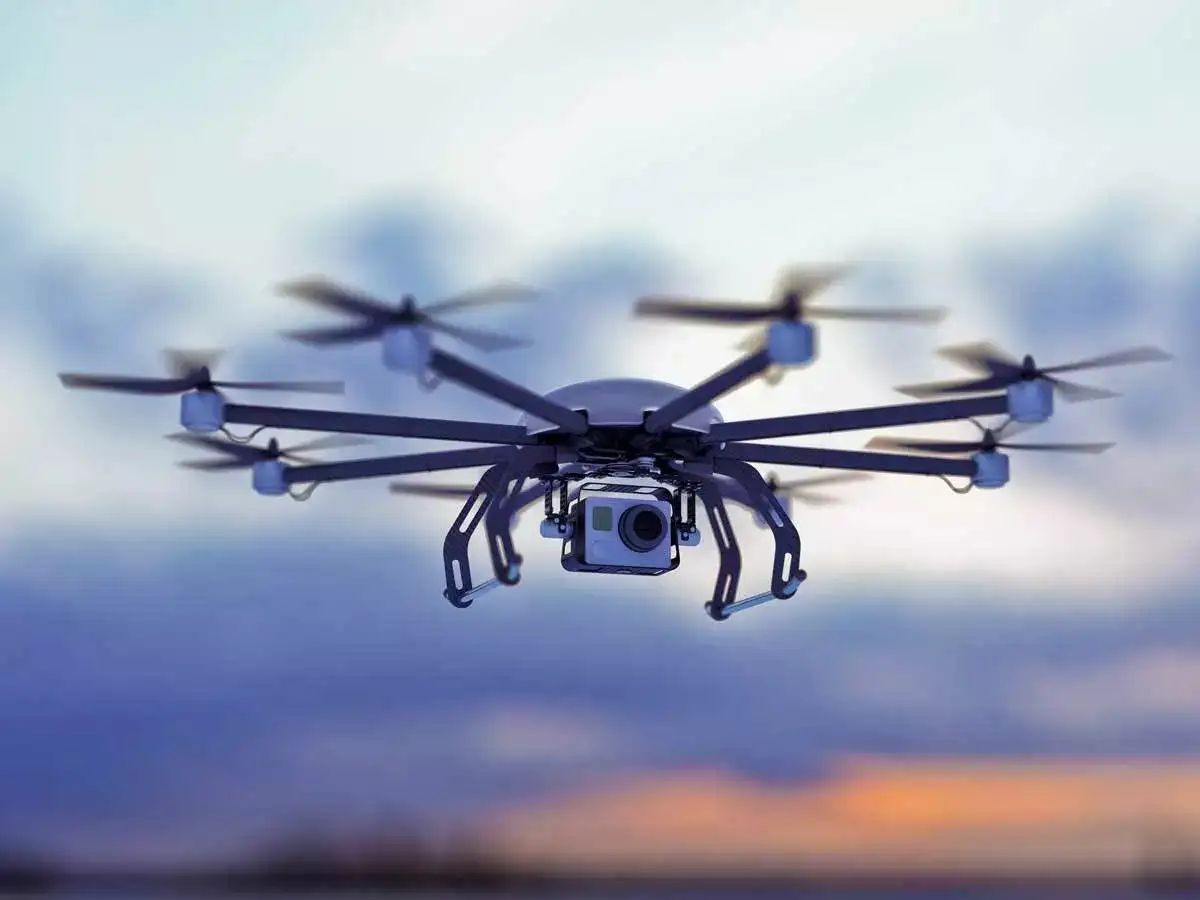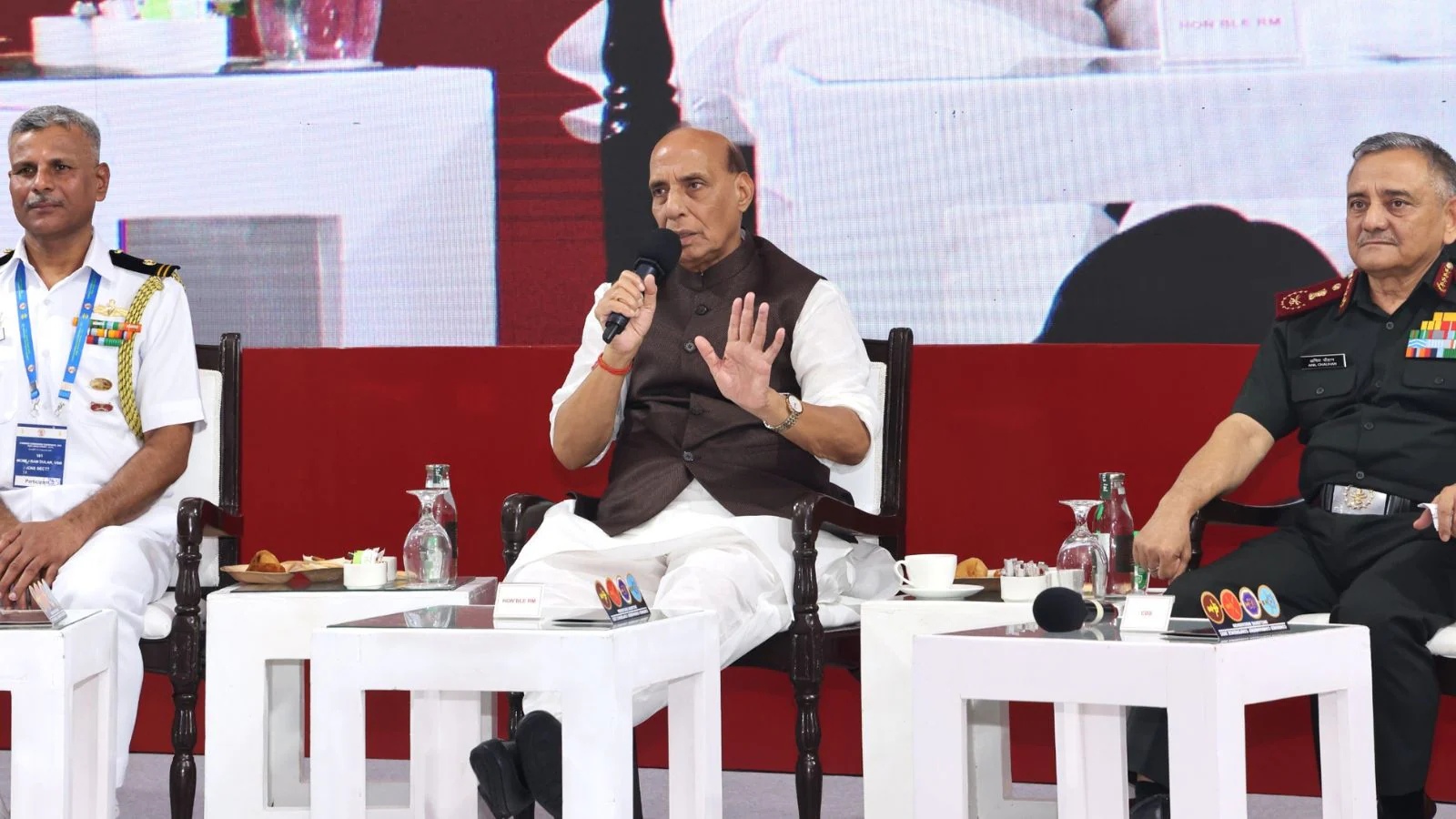By The Week UK
Copyright theweek

SUBSCRIBE & SAVE
Less than $3 per week
View Profile
The Explainer
Talking Points
The Week Recommends
Newsletters
From the Magazine
The Week Junior
Food & Drink
Personal Finance
All Categories
Newsletter sign up
Russia’s war games and the threat to Nato
Incursion into Poland and Zapad 2025 exercises seen as a test for Europe
Newsletter sign up
Vladimir Putin watches the Zapad 2025 military drills
(Image credit: Mikhail Metzel / Pool / AFP / Getty Images)
The Week UK
18 September 2025
Days after Polish and Nato forces scrambled to shoot down Russian drones that had flown into Poland’s airspace, Russian troops gathered in neighbouring Belarus for largescale war games; Indian and Iranian troops also participated. The Zapad 2025 exercises included a simulated nuclear strike. Although they were billed as defensive, analysts said they were designed to intimidate Europe.
In total, 19 drones crossed into Poland last Wednesday. Moscow’s allies claimed that they had strayed there accidentally, but days later, another Russian drone violated Romanian airspace. Warsaw said the incursion was a test of Nato’s defensive capabilities, and invoked Article 4, which brings a threat to the attention of its council. Nato then launched an operation to bolster its eastern flank. Donald Trump said he would impose tougher sanctions on Russia – but only if all Nato members stop buying Russian oil and gas and slap heavy tariffs on China.
‘Chinks in the alliance’s armour’
The sheer scale of the incursion into Poland makes it clear that this was a “calculated escalation” by Vladimir Putin”, said The Daily Telegraph. Emboldened by Trump’s indulgence, he wanted to see if Nato had the resolve to respond. Poland has painful recent experience of invasion and occupation, said The Independent. So its PM Donald Tusk’s warning that the prospect of conflict in Europe is “closer than at any time since the Second World War”, has to be taken seriously: this was the first time in Nato’s history that its member states have had to directly attack Russian forces, albeit unmanned ones.
Escape your echo chamber. Get the facts behind the news, plus analysis from multiple perspectives.
SUBSCRIBE & SAVE
Sign up for The Week’s Free Newsletters
From our morning news briefing to a weekly Good News Newsletter, get the best of The Week delivered directly to your inbox.
From our morning news briefing to a weekly Good News Newsletter, get the best of The Week delivered directly to your inbox.
Fortunately, for all Trump’s vacillations, Nato was still strong enough to answer the call. Yet there are “chinks in the alliance’s armour”, said The Times. Two of its members, Hungary and Slovakia, are “virtual allies of Russia”. And the leader of the US, its most powerful member, treats the Ukraine War as a “business opportunity”. Trump is making European nations buy US weapons to give to Kyiv; now he’s trying to stop them buying Russian gas, to boost sales of US liquefied natural gas.
Warning shots
Ever since Russian tanks rolled into Ukraine, Western strategists have been asking who the Kremlin would target next, said Mark Almond in the Daily Mail. The consensus was that “small, militarily weak nations on Russia’s border”, such as Latvia or Estonia, would be the target. Yet instead, Putin picked Poland, a country which spends nearly 5% of its GDP on defence – the highest share of any Nato member – and has the third-largest standing army in the alliance, after the US and Turkey.
Does this suggest we are “teetering on the edge of World War Three”? These warning shorts certainly expose our weaknesses, said Edward Lucas in The Times. “The US insists (rightly) that Europe must take the lead in standing up to Russia.” But without it, there is nothing like a unified European alliance. Political stances vary wildly, while even supportive nations, such as France, Spain and Belgium, flinch at the risk and the cost.
Trump’s ‘latest wheeze’
Europe’s Nato powers have more than enough air power to keep the Russians out, said Hamish de Bretton-Gordon in The Daily Telegraph. But they should go further, by establishing a no-fly zone in western Ukraine. This would save thousands of lives; and as a display of power, it could be the “catalyst to get Putin around the negotiating table”.
Sign up for Today’s Best Articles in your inbox
A free daily email with the biggest news stories of the day – and the best features from TheWeek.com
Contact me with news and offers from other Future brandsReceive email from us on behalf of our trusted partners or sponsorsBy submitting your information you agree to the Terms & Conditions and Privacy Policy and are aged 16 or over.
Nonsense, said Jennifer Kavanagh on UnHerd. Ukraine – in dire straits militarily – has an interest in exaggerating the Russian threat to Europe, to scare the continent into giving more aid. Instead of responding in a bellicose fashion, and risking a wider war, Western leaders should tamp down their rhetoric and “double down on diplomacy”.
Unfortunately, any diplomatic efforts are liable to be scuppered by Trump, said Jason Corcoran in The Moscow Times. His “latest wheeze” – promising to ramp up sanctions on Russia if Nato imposes tariffs of 50% to 100% on Chinese imports – is a “cynical stalling tactic”. He knows that this would be economic suicide for Europe. He is letting Moscow “off the hook, granting Putin much-needed breathing room as the war rages on”.
India’s participation in the Zapad war games, led by the highly respected Kumaon Regiment, has “raised eyebrows” amid signs that the US may be losing a “key ally” in Asia, says Lorraine Mallinder on Al Jazeera. But despite recent tensions over US tariffs, Trump confirmed last week that India and the US were continuing negotiations. Denmark announced on Wednesday that it would buy long-range precision missiles and drones, for the first time, to combat the threat from Russia. “Russia is testing us,” said Danish PM Mette Frederiksen.
Explore More
Vladimir Putin
Donald Trump
The Week UK
Social Links Navigation
Eurovision faces its Waterloo over Israel boycotts
Talking Point
Five major broadcasters have threatened to pull out of next year’s contest over Israel’s participation
What is Donald Trump’s visit worth to the UK economy?
In the Spotlight
Centrepiece of the president’s trip, business-wise, is a ‘technology partnership’
Trump’s visit: the mouse and the walrus
Britain is keen to point to its own ‘tangible results’, but the US administration has made their demands clear
You might also like
What will bring Vladimir Putin to the negotiating table?
Today’s Big Question
With diplomatic efforts stalling, the US and EU turn again to sanctions as Russian drone strikes on Poland risk dramatically escalating conflict
The mission to demine Ukraine
The Explainer
An estimated quarter of the nation – an area the size of England – is contaminated with landmines and unexploded shells from the war
Ottawa Treaty: why are Russia’s neighbours leaving anti-landmine agreement?
Today’s Big Question
Ukraine to follow Poland, Finland, Lithuania, Latvia and Estonia as Nato looks to build a new ‘Iron Curtain’ of millions of landmines
How drone warfare works
The Explainer
From Ukraine to Iran, it has become clear that unmanned aircraft are rapidly revolutionising modern warfare
How long can Nato keep Donald Trump happy?
Today’s Big Question
Military alliance pulls out all the stops to woo US president on his peacemaker victory lap
How far would Russia go for Iran?
Today’s Big Question
US air strikes represent an ’embarrassment, provocation and opportunity’ all rolled into one for Vladimir Putin
How the Israel-Iran conflict broke out
The Explainer
Israel’s strike on Iran’s nuclear and missile programmes was years in the planning
What happens if Israel attacks Iran?
TODAY’S BIG QUESTION
Israel is ‘ready to strike’ and Tehran has plans for counterattacks against the US as nuclear talks appear deadlocked
View More ▸
Contact Future’s experts
Terms and Conditions
Privacy Policy
Cookie Policy
Advertise With Us
The Week is part of Future US Inc, an international media group and leading digital publisher. Visit our corporate site.
Future US, Inc. Full 7th Floor, 130 West 42nd Street



